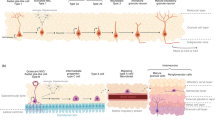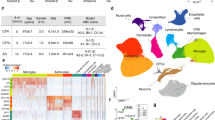Abstract
NOTCH receptors are relevant to multiple neurodegenerative diseases. However, the roles and mechanisms of NOTCH receptors in HIV-associated neurocognitive disorder (HAND) remain largely unclear. Transactivator of transcription (Tat) induces oxidative stress and inflammatory response in astrocytes, thereby leading to neuronal apoptosis in the central nervous system. We determined that NOTCH3 expression was upregulated during subtype B or C Tat expression in HEB astroglial cells. Moreover, bioinformatics analysis of the Gene Expression Omnibus (GEO) dataset revealed that NOTCH3 mRNA expression in the frontal cortex tissues of HIV encephalitis patients was higher than that of HIV control patients. Of note, subtype B Tat, rather than subtype C Tat, interacted with the extracellular domain of the NOTCH3 receptor, thus activating NOTCH3 signaling. Downregulation of NOTCH3 attenuated subtype B Tat-induced oxidative stress and reactive oxygen species generation. In addition, we demonstrated that NOTCH3 signaling facilitated subtype B Tat-activated NF-κB signaling pathway, thereby mediating pro-inflammatory cytokines IL-6 and TNF-α production. Furthermore, downregulation of NOTCH3 in HEB astroglial cells protected SH-SY5Y neuronal cells from astrocyte-mediated subtype B Tat neurotoxicity. Taken together, our study clarifies the potential role of NOTCH3 in subtype B Tat-induced oxidative stress and inflammatory response in astrocytes, which could be a novel therapeutic target for the relief of HAND.







Similar content being viewed by others
Data availability
The data that support the findings of this study are available on request from the corresponding authors, upon reasonable request.
References
Albini A, Ferrini S, Benelli R, Sforzini S, Giunciuglio D, Aluigi MG, Proudfoot AE, Alouani S, Wells TN, Mariani G, Rabin RL, Farber JM, Noonan DM (1998) HIV-1 Tat protein mimicry of chemokines. Proc Natl Acad Sci USA 95:13153–13158. https://doi.org/10.1073/pnas.95.22.13153
Bassil R, Orent W, Elyaman W (2013) Notch signaling and T-helper cells in EAE/MS. Clin Dev Immunol 2013:570731. https://doi.org/10.1155/2013/570731
Ben Haij N, Leghmari K, Planès R, Thieblemont N, Bahraoui E (2013) HIV-1 Tat protein binds to TLR4-MD2 and signals to induce TNF-α and IL-10. Retrovirology 10:123. https://doi.org/10.1186/1742-4690-10-123
Brailoiu E, Brailoiu GC, Mameli G, Dolei A, Sawaya BE, Dun NJ (2006) Acute exposure to ethanol potentiates human immunodeficiency virus type 1 Tat-induced Ca(2+) overload and neuronal death in cultured rat cortical neurons. J Neurovirol 12:17–24. https://doi.org/10.1080/13550280500516427
Clifford DB, Ances BM (2013) HIV-associated neurocognitive disorder. Lancet Infect Dis 13:976–986. https://doi.org/10.1016/S1473-3099(13)70269-X
Cotto B, Natarajaseenivasan K, Langford D (2019) Astrocyte activation and altered metabolism in normal aging, age-related CNS diseases, and HAND. J Neurovirol 25:722–733. https://doi.org/10.1007/s13365-019-00721-6
Delpech V (2022) The HIV epidemic: global and United Kingdom trends. Medicine (abingdon) 50:202–204. https://doi.org/10.1016/j.mpmed.2022.01.002
Dickens AM, Yoo SW, Chin AC, Xu J, Johnson TP, Trout AL, Hauser KF, Haughey NJ (2017) Chronic low-level expression of HIV-1 Tat promotes a neurodegenerative phenotype with aging. Sci Rep 7:7748. https://doi.org/10.1038/s41598-017-07570-5
Dong H, Ye X, Zhong L, Xu J, Qiu J, Wang J, Shao Y, Xing H (2019) Role of FOXO3 activated by HIV-1 Tat in HIV-associated neurocognitive disorder neuronal apoptosis. Front Neurosci 13:44. https://doi.org/10.3389/fnins.2019.00044
Fan Y, Gao X, Chen J, Liu Y, He JJ (2016) HIV Tat impairs neurogenesis through functioning as a Notch ligand and activation of Notch signaling pathway. J Neurosci 36:11362–11373. https://doi.org/10.1523/JNEUROSCI.1208-16.2016
González-Scarano F, Martín-García J (2005) The neuropathogenesis of AIDS. Nat Rev Immunol 5:69–81. https://doi.org/10.1038/nri1527
Guo ML, Kook YH, Shannon CE, Buch S (2018) Notch3/VEGF-A axis is involved in TAT-mediated proliferation of pulmonary artery smooth muscle cells: implications for HIV-associated PAH. Cell Death Discov 4:22. https://doi.org/10.1038/s41420-018-0087-9
Heaton RK, Clifford DB, Franklin DR Jr, Woods SP, Ake C, Vaida F, Ellis RJ, Letendre SL, Marcotte TD, Atkinson JH, Rivera-Mindt M, Vigil OR, Taylor MJ, Collier AC, Marra CM, Gelman BB, McArthur JC, Morgello S, Simpson DM, McCutchan JA, Abramson I, Gamst A, Fennema-Notestine C, Jernigan TL, Wong J, Grant I; CHARTER Group (2010) HIV-associated neurocognitive disorders persist in the era of potent antiretroviral therapy: CHARTER study. Neurology 75:2087–2096. https://doi.org/10.1212/WNL.0b013e318200d727
Ho DM, Artavanis-Tsakonas S, Louvi A (2020) The Notch pathway in CNS homeostasis and neurodegeneration. Wiley Interdiscip Rev Dev Biol 9:e358. https://doi.org/10.1002/wdev.358
Kapoor A, Nation DA (2021) Role of Notch signaling in neurovascular aging and Alzheimer’s disease. Semin Cell Dev Biol 116:90–97. https://doi.org/10.1016/j.semcdb.2020.12.011
Marino J, Wigdahl B, Nonnemacher MR (2020) Extracellular HIV-1 Tat mediates increased glutamate in the CNS leading to onset of senescence and progression of HAND. Front Aging Neurosci 12:168. https://doi.org/10.3389/fnagi.2020.00168
Mateen FJ, Mills EJ (2012) Aging and HIV-related cognitive loss. JAMA 308:349–350. https://doi.org/10.1001/jama.2012.8538
Nonneman A, Criem N, Lewandowski SA, Nuyts R, Thal DR, Pfrieger FW, Ravits J, Van Damme P, Zwijsen A, Van Den Bosch L, Robberecht W (2018) Astrocyte-derived iagged-1 mitigates deleterious Notch signaling in amyotrophic lateral sclerosis. Neurobiol Dis 119:26–40. https://doi.org/10.1016/j.nbd.2018.07.012
Peng H, Erdmann N, Whitney N, Dou H, Gorantla S, Gendelman HE, Ghorpade A, Zheng J (2006) HIV-1-infected and/or immune activated macrophages regulate astrocyte SDF-1 production through IL-1beta. Glia 54:619–629. https://doi.org/10.1002/glia.20409
Puri RV, Yerrathota S, Home T, Idowu JY, Chakravarthi VP, Ward CJ, Singhal PC, Vanden Heuvel GB, Fields TA, Sharma M (2019) Notch4 activation aggravates NF-κB-mediated inflammation in HIV-1-associated nephropathy. Dis Model Mech 12:dmm040642. https://doi.org/10.1242/dmm.040642
Qian D, Li L, Rong Y, Liu W, Wang Q, Zhou Z, Gu C, Huang Y, Zhao X, Chen J, Fan J, Yin G (2019) Blocking Notch signal pathway suppresses the activation of neurotoxic A1 astrocytes after spinal cord injury. Cell Cycle 18:3010–3029. https://doi.org/10.1080/15384101.2019.1667189
Qin W, Li J, Zhu R, Gao S, Fan J, Xia M, Zhao RC, Zhang J (2019) Melatonin protects blood-brain barrier integrity and permeability by inhibiting matrix metalloproteinase-9 via the NOTCH3/NF-κB pathway. Aging (Albany NY) 11:11391–11415. https://doi.org/10.18632/aging.102537
Ranga U, Shankarappa R, Siddappa NB, Ramakrishna L, Nagendran R, Mahalingam M, Mahadevan A, Jayasuryan N, Satishchandra P, Shankar SK, Prasad VR (2004) Tat protein of human immunodeficiency virus type 1 subtype C strains is a defective chemokine. J Virol 78:2586–2590. https://doi.org/10.1128/JVI.78.5.2586-2590.2004
Raybuck JD, Hargus NJ, Thayer SA (2017) A GluN2B-selective NMDAR antagonist reverses synapse loss and cognitive impairment produced by the HIV-1 protein Tat. J Neurosci 37:7837–7847. https://doi.org/10.1523/JNEUROSCI.0226-17.2017
Sacktor N, Skolasky RL, Seaberg E, Munro C, Becker JT, Martin E, Ragin A, Levine A, Miller E (2016) Prevalence of HIV-associated neurocognitive disorders in the multicenter AIDS cohort study. Neurology 86:334–340. https://doi.org/10.1212/WNL.0000000000002277
Saribas AS, Khalili K, Sariyer IK (2015) Dysregulation of autophagy by HIV-1 Nef in human astrocytes. Cell Cycle 14:2899–2904. https://doi.org/10.1080/15384101.2015.1069927
Sharma M, Magenheimer LK, Home T, Tamano KN, Singhal PC, Hyink DP, Klotman PE, Vanden Heuvel GB, Fields TA (2013) Inhibition of Notch pathway attenuates the progression of human immunodeficiency virus-associated nephropathy. Am J Physiol Renal Physiol 304:F1127–F1136. https://doi.org/10.1152/ajprenal.00475.2012
Shoham N, Cohen L, Gazit A, Yaniv A (2003) The Tat protein of the caprine arthritis encephalitis virus interacts with the Notch2 EGF-like repeats and the epithelin/granulin precursor. Intervirology 46:239–244. https://doi.org/10.1159/000072434
Song HY, Ryu J, Ju SM, Park LJ, Lee JA, Choi SY, Park J (2007) Extracellular HIV-1 Tat enhances monocyte adhesion by up-regulation of ICAM-1 and VCAM-1 gene expression via ROS-dependent NF-kappaB activation in astrocytes. Exp Mol Med 39:27–37. https://doi.org/10.1038/emm.2007.4
Thompson KA, McArthur JC, Wesselingh SL (2001) Correlation between neurological progression and astrocyte apoptosis in HIV-associated dementia. Ann Neurol 49:745–752. https://doi.org/10.1002/ana.1011
Tian R, Wang S (2019) Electroacupuncture reduced apoptosis of hippocampal neurons in mice with cerebral infarction by regulating the Notch3 signaling pathway. J Mol Neurosci 67:456–466. https://doi.org/10.1007/s12031-018-1253-5
Wallet C, De Rovere M, Van Assche J, Daouad F, De Wit S, Gautier V, Mallon PWG, Marcello A, Van Lint C, Rohr O, Schwartz C (2019) Microglial cells: the main HIV-1 reservoir in the brain. Front Cell Infect Microbiol 9:362. https://doi.org/10.3389/fcimb.2019.00362
Williams ME, Zulu SS, Stein DJ, Joska JA, Naudé PJW (2020) Signatures of HIV-1 subtype B and C Tat proteins and their effects in the neuropathogenesis of HIV-associated neurocognitive impairments. Neurobiol Dis 136:104701. https://doi.org/10.1016/j.nbd.2019.104701
Yao H, Duan M, Hu G, Buch S (2011) Platelet-derived growth factor B chain is a novel target gene of cocaine-mediated Notch1 signaling: implications for HIV-associated neurological disorders. J Neurosci 31:12449–12454. https://doi.org/10.1523/JNEUROSCI.2330-11.2011
Youn GS, Cho H, Kim D, Choi SY, Park J (2017) Crosstalk between HDAC6 and Nox2-based NADPH oxidase mediates HIV-1 Tat-induced pro-inflammatory responses in astrocytes. Redox Biol 12:978–986. https://doi.org/10.1016/j.redox.2017.05.001
Yu C, Narasipura SD, Richards MH, Hu XT, Yamamoto B, Al-Harthi L (2017) HIV and drug abuse mediate astrocyte senescence in a β-catenin-dependent manner leading to neuronal toxicity. Aging Cell 16:956–965. https://doi.org/10.1111/acel.12593
Zhou F, Liu X, Gao L, Zhou X, Cao Q, Niu L, Wang J, Zuo D, Li X, Yang Y, Hu M, Yu Y, Tang R, Lee BH, Choi BW, Wang Y, Izumiya Y, Xue M, Zheng K, Gao D (2019) HIV-1 Tat enhances purinergic P2Y4 receptor signaling to mediate inflammatory cytokine production and neuronal damage via PI3K/Akt and ERK MAPK pathways. J Neuroinflammation 16:71. https://doi.org/10.1186/s12974-019-1466-8
Zhou X, Zhou S, Tao J, Gao Y, Meng G, Cao D, Gao L (2022) HIV-1 Tat drives the Fabp4/NF-κB feedback loop in microglia to mediate inflammatory response and neuronal apoptosis. J Neurovirol 28:483–496. https://doi.org/10.1007/s13365-022-01094-z
Funding
This research received the support of Jiangsu Provincial Medical Key Discipline (Laboratory) Cultivation Unit (JSDW202249), Scientific Research Innovation Team of Kangda College of Nanjing Medical University (KD2022KYCXTD005), National Natural Science Foundation of China (81904166), Nantong Science and Technology Project (JC2021001), Scientific Research Project of Health Commission of Nantong (MS2022025), and Nantong First People's Hospital High-level Science and Technology Project Cultivation Fund (YPYJJYB002).
Author information
Authors and Affiliations
Contributions
Lin Gao and Hongbin Liu designed the study. Lin Gao and Weixi Sun performed the research. Dongmei Zhang, Yanxing Shang, and Li Li analyzed data. Lei Zhang wrote the paper. Wenhua Tao revised the paper. All co-authors have reviewed and approved of the article before submission.
Corresponding authors
Ethics declarations
Ethics approval and informed consent
This article does not contain any studies with human participants performed by any of the authors.
Consent for publication
All authors consent to publication.
Conflict of interest
The authors declare no competing interests.
Additional information
Publisher's Note
Springer Nature remains neutral with regard to jurisdictional claims in published maps and institutional affiliations.
Highlights
• HIV-1 subtype B Tat promotes NOTCH3 expression and NOTCH3 signaling activation in astrocytes.
• Knockdown of NOTCH3 suppresses HIV-1 subtype B Tat-induced oxidative stress and inflammatory response in astrocytes.
• Knockdown of NOTCH3 in astrocytes displays a neuroprotective effect against HIV-1 subtype B Tat.
Rights and permissions
Springer Nature or its licensor (e.g. a society or other partner) holds exclusive rights to this article under a publishing agreement with the author(s) or other rightsholder(s); author self-archiving of the accepted manuscript version of this article is solely governed by the terms of such publishing agreement and applicable law.
About this article
Cite this article
Gao, L., Sun, W., Zhang, D. et al. HIV-1 subtype B Tat enhances NOTCH3 signaling in astrocytes to mediate oxidative stress, inflammatory response, and neuronal apoptosis. J. Neurovirol. 29, 479–491 (2023). https://doi.org/10.1007/s13365-023-01151-1
Received:
Revised:
Accepted:
Published:
Issue Date:
DOI: https://doi.org/10.1007/s13365-023-01151-1




